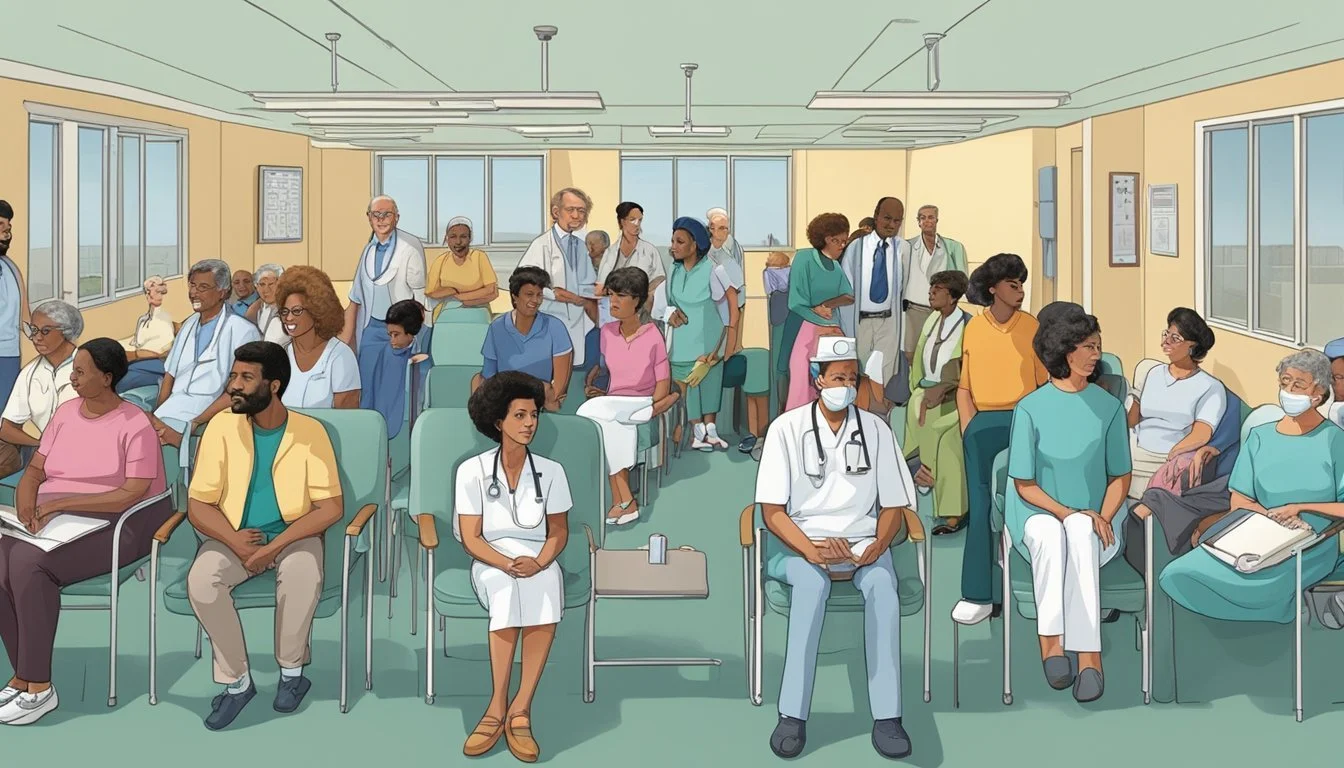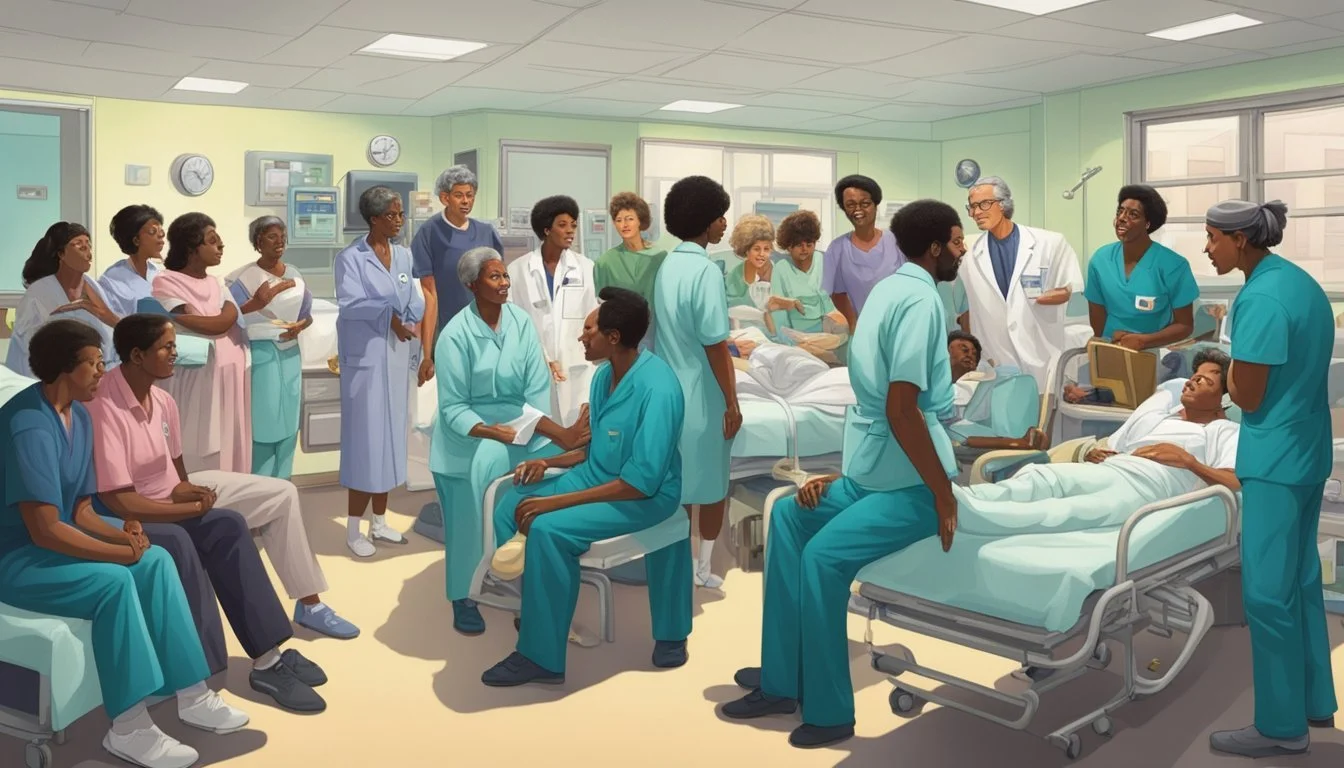The Real Dallas Buyers Club
Ron Woodroof's Crusade Against AIDS and FDA Restrictions
Ron Woodroof, a Texas electrician and rodeo enthusiast, became an unlikely AIDS activist in the 1980s after his own HIV diagnosis. Faced with a grim prognosis and dissatisfied with the limited FDA-approved treatments available, Woodroof took matters into his own hands.
In March 1988, Woodroof established the Dallas Buyers Club, an underground network that provided experimental AIDS medications to those in desperate need. This initiative was one of several similar buyers clubs that emerged during the height of the AIDS crisis, offering hope to patients who felt abandoned by the medical establishment.
Woodroof's story gained widespread attention through the 2013 film "Dallas Buyers Club," starring Matthew McConaughey. The movie dramatized Woodroof's transformation from a rugged cowboy to a determined advocate, showcasing his efforts to circumvent bureaucratic obstacles and import potentially life-saving drugs. Woodroof's actions, while controversial at the time, highlighted the urgent need for improved AIDS treatments and faster drug approval processes.
The Early Life of Ron Woodroof
Ron Woodroof was born on February 3, 1950, in Texas. He grew up in a working-class family and spent much of his youth in Dallas.
As a young man, Woodroof developed a reputation as a hard-living, tough-talking Texan. He worked as an electrician and rodeo cowboy, embracing a lifestyle that often pushed boundaries.
Woodroof's early years were marked by risk-taking behavior. He engaged in unprotected sex with multiple partners and experimented with recreational drugs, activities that would later have serious consequences for his health.
In the early 1980s, Woodroof remained unaware of the growing AIDS crisis. His life continued largely unchanged until 1985, when he received a devastating diagnosis that would alter the course of his life forever.
Prior to his diagnosis, Woodroof had limited knowledge of HIV and AIDS. His background did not prepare him for the medical and social challenges he would soon face as a person living with the virus.
Diagnosis and the Formation of the Dallas Buyers Club
Ron Woodroof's AIDS diagnosis in 1985 sparked a journey of self-advocacy and activism. His initial shock and denial transformed into determination as he established the Dallas Buyers Club to access alternative treatments.
Initial Reaction to HIV Diagnosis
In 1985, Ron Woodroof received his HIV diagnosis. The news came as a devastating shock to the rodeo cowboy from Texas. Doctors initially gave him just 30 days to live.
Woodroof's first response was denial and anger. He struggled to accept his condition, given the stigma surrounding AIDS in the 1980s. The limited treatment options available at the time added to his frustration.
As reality set in, Woodroof's mindset shifted. He began researching the disease and potential treatments aggressively. This quest for information would eventually lead him to take matters into his own hands.
Establishment of the Buyers Club
Woodroof founded the Dallas Buyers Club in March 1988. The club aimed to provide members with access to alternative AIDS treatments not approved by the FDA.
He traveled abroad to source experimental medications and supplements. These were then distributed to other AIDS patients in Dallas.
The club operated in a legal gray area. Woodroof exploited loopholes to import drugs for "personal use." He faced ongoing challenges from authorities but persisted in his efforts.
Membership grew as word spread about the alternative treatments. The Dallas Buyers Club became a lifeline for many AIDS patients seeking options beyond AZT, the only FDA-approved drug at the time.
Legal Challenges and FDA Confrontations
Ron Woodroof faced numerous legal battles and regulatory obstacles in his efforts to provide alternative AIDS treatments. His activism put him at odds with the FDA and medical establishment, leading to court cases and ongoing conflicts over access to unapproved medications.
Court Battles for Alternative Treatments
Woodroof's Dallas Buyers Club repeatedly clashed with authorities over the importation and distribution of non-FDA approved drugs. He filed lawsuits against the FDA to gain access to experimental treatments like Peptide T.
These legal actions aimed to challenge the slow drug approval process and expand treatment options for AIDS patients. Woodroof argued that terminal patients should have the right to try unproven therapies.
His court battles drew attention to the plight of AIDS patients and the limitations of available treatments in the 1980s. Though Woodroof often lost in court, his persistence helped fuel the larger movement for AIDS treatment activism.
Regulatory Hurdles and Activism
The FDA targeted buyers clubs like Woodroof's with raids and seizures of unapproved drugs. Agents confiscated shipments and threatened legal action to shut down the clubs' operations.
Woodroof responded by finding creative ways to circumvent regulations. He set up offshore supply networks and used legal loopholes to continue providing medications to club members.
His confrontations with the FDA became increasingly public. Woodroof spoke out in the media and at protests, criticizing the slow pace of drug approvals. His activism helped pressure regulators to accelerate the process for AIDS treatments.
While often at odds with authorities, Woodroof's efforts contributed to eventual reforms in how experimental drugs were made available to patients with life-threatening illnesses.
The Impact on HIV/AIDS Treatment
Ron Woodroof's efforts through the Dallas Buyers Club significantly influenced HIV/AIDS treatment in the United States. His actions sparked changes in medication access and drug approval processes.
Advocacy for Medication Access
Woodroof's work highlighted the urgent need for better HIV/AIDS treatments. He imported and distributed unapproved drugs to patients desperate for alternatives. This challenged the slow FDA approval process for new medications.
The Dallas Buyers Club became a model for similar organizations across the country. These clubs provided hope and options to thousands of HIV/AIDS patients.
Woodroof's activism drew attention to the limited treatments available in the U.S. It pressured pharmaceutical companies and government agencies to accelerate research and development of new drugs.
Influence on Drug Approval Processes
The Dallas Buyers Club's activities exposed flaws in the FDA's drug approval system. Woodroof's legal battles brought national attention to the lengthy and restrictive approval process for HIV/AIDS medications.
This public scrutiny led to reforms in how the FDA handled experimental treatments. The agency introduced "compassionate use" programs, allowing easier access to unapproved drugs for terminally ill patients.
Woodroof's efforts contributed to the eventual fast-tracking of HIV/AIDS drug approvals. This resulted in more rapid development and release of life-saving medications in subsequent years.
Ron Woodroof's Legacy
Ron Woodroof's efforts to obtain and distribute unapproved AIDS treatments left a lasting impact on patient advocacy and healthcare. His actions challenged the medical establishment and influenced future approaches to drug access and clinical trials.
Inspiring Patient Activism
Woodroof's Dallas Buyers Club became a model for other AIDS patients seeking alternative treatments. His determination inspired many to take a more active role in their healthcare decisions.
The club's operations shed light on the FDA's lengthy drug approval process, prompting calls for faster access to experimental medications. This grassroots movement contributed to the eventual implementation of "compassionate use" programs for critically ill patients.
Woodroof's story, popularized by the 2013 film, brought renewed attention to early AIDS activism. It highlighted the struggles faced by patients and their fight against discrimination.
Long-Term Effects on the Healthcare System
Woodroof's actions contributed to changes in how new drugs are tested and approved. The FDA introduced accelerated approval processes for life-threatening conditions, partly due to pressure from AIDS activists.
Clinical trial designs evolved to be more inclusive and responsive to patient needs. This shift allowed for faster evaluation of promising treatments while maintaining safety standards.
The buyers club model influenced the development of patient advocacy groups. These organizations now play crucial roles in funding research, shaping policy, and providing support services.
Woodroof's legacy extends to modern debates on drug pricing and access. His story continues to be cited in discussions about balancing regulatory caution with the urgent needs of seriously ill patients.
Cultural Depiction in Media
Ron Woodroof's story gained mainstream attention through its portrayal in film. The movie sparked discussions about the accuracy of its depiction and its representation of AIDS activism in the 1980s.
The Film 'Dallas Buyers Club'
'Dallas Buyers Club', released in 2013, brought Ron Woodroof's story to a global audience. Matthew McConaughey starred as Woodroof, losing significant weight for the role. The film depicted Woodroof's transformation from a rodeo cowboy to an AIDS activist who smuggled unapproved medications into the United States. It highlighted his efforts to distribute these treatments to other AIDS patients through the 'buyers club' system.
The movie received critical acclaim and won several awards, including three Academy Awards. McConaughey and Jared Leto, who played a transgender woman named Rayon, both won Oscars for their performances.
Discussions on Accuracy and Representation
While 'Dallas Buyers Club' raised awareness about AIDS activism, it faced scrutiny regarding its historical accuracy. Some critics pointed out that the film took liberties with Woodroof's story for dramatic effect. The character of Rayon, for instance, was fictional and not based on a specific person from Woodroof's life.
AIDS activists and historians debated the film's portrayal of the medical establishment and the FDA. Some argued that it oversimplified complex issues surrounding AIDS treatment in the 1980s. The movie's focus on alternative treatments also sparked discussions about the representation of scientific research and approved medications of the time.
Contemporary Relevance
Ron Woodroof's story continues to resonate in modern healthcare debates. His activism highlights ongoing challenges in medical access and patient autonomy that remain relevant today.
Comparisons to Modern Patient Rights Movements
The Dallas Buyers Club parallels current patient advocacy efforts. Many groups today push for faster drug approvals and expanded access to experimental treatments. The Right to Try movement, which gained federal traction in 2018, echoes Woodroof's fight for terminally ill patients to access unapproved therapies.
Some modern AIDS activists draw inspiration from early pioneers like Woodroof. They continue advocating for affordable medications and combating stigma. Patient-run buyers clubs still exist for certain conditions, operating in legal gray areas to import cheaper drugs from abroad.
Ongoing Issues in Access to Care
Barriers to healthcare access persist decades after Woodroof's time. High drug prices remain a major hurdle for many patients with HIV/AIDS and other chronic conditions. In 2019, the average annual cost of HIV treatment in the U.S. exceeded $39,000.
Geographic and socioeconomic disparities in care continue to affect health outcomes. Rural areas often lack specialized services for complex conditions. Minority communities face higher rates of HIV infection and poorer access to treatment.
Debates around FDA approval processes are still contentious. Balancing safety with rapid access to new therapies remains challenging. The COVID-19 pandemic reignited discussions on emergency use authorizations and clinical trial designs.





